Have you ever felt powerless in the face of hunger, counting down the minutes until your next meal and wondering how to control your cravings? Our primitive instincts often override our conscious attempts to restrict eating, leaving us feeling defeated.
But what if you could train your inner “lizard brain” to master your appetite? Enter the blood glucose meter, a tool that can help you understand and control your hunger in real time.
In this article, we’ll explore why traditional methods like calorie counting and intermittent fasting often fall short. We’ll introduce you to hunger training, a revolutionary approach that uses your blood glucose levels to empower your appetite control.
Discover why hunger training works, how long it takes to see results, and how to find your personalized blood sugar trigger. We’ll also show you how to use your glucose trends to make informed dietary choices, regardless of your eating pattern.
The best part? You don’t need to have diabetes to benefit from hunger training. Whether you want to lose weight or improve your metabolic health, this approach can guide you toward a healthier relationship with food.
Say goodbye to the battle with your cravings and welcome a new way of nourishing your body—one that’s data-driven and tailored to you.
BONUS: Download Free Data-Driven Fasting Book That Has Helped Thousands Of People Personalize Their Fasting Routine
- How to Use Your Blood Glucose Meter as a Fuel Gauge
- The Problem with Counting Calories
- The Problem with Intermittent Fasting
- Understanding Your True Hunger Signals
- Don’t Be Seduced by Flat Line Blood Sugars on Your Continuous Glucose Monitor
- What Is Hunger Training?
- Why Hunger Training Works So Well
- How Long Does It Take to Train Your Hunger?
- Why Does Hunger Training Work So Well?
- Your Personalised Blood Sugar Trigger
- Progressive Overload for your Metabolism
- How Can I Use My Glucose Trends to Guide WHAT I Eat?
- Will Data-Driven Fasting Only Work if I Have Diabetes?
How to Use Your Blood Glucose Meter as a Fuel Gauge
Have you ever wished that there was a precise fuel gauge to tell you if you:
- needed to eat,
- are just craving those yummy leftovers in the fridge,
- are eating to soothe your emotions or because you are bored,
- are eating out of habit, or
- want to eat just because it’s ‘breakfast time’?
You may be surprised (and excited!) to learn that the humble blood glucose meter is as close as it gets to having an on-the-spot hunger meter to gauge appetite accurately and validate your hunger instantaneously.
Test your blood sugar to validate your hunger when you feel hungry and think about eating. If your blood sugar is still above what is normal for you, you probably don’t need to eat, and you don’t need more carbs.
And yes, it’s that simple!
The Problem with Counting Calories
The First Law of Thermodynamics states that energy is always conserved and cannot be created or destroyed.
This also applies to the energy in your food. So yes, calories always count, but only if you can count all the calories accurately, all the time.
However, most people don’t find calorie counting to be helpful over the long term for a range of reasons:
- It is impossible to measure both sides of the calories-in vs. calories-out equation accurately.
- From a calories-in perspective, the calorie contents of most foods are calculated by measuring the heat given off when burning food in a bomb calorimeter – but your body doesn’t burn food the same way.
- From a calories-out perspective, your energy requirements vary based on several things, including your stress and activity levels, whether you’re sick or healing, your ever-changing body composition, where you’re at in the monthly cycle (for females), and more. Trying to stick to a fixed calorie target causes you to overeat some days and fight hunger on others.
- Tracking every morsel of food leaves you focused on how much you’re allowed to eat today rather than how much you need to eat. But unfortunately, it also forces your conscious mind to oppose your subconscious instincts constantly.
- Over time, you can lose touch with your innate hunger cues and risk developing disordered eating habits such as binge eating, anorexia nervosa, or bulimia nervosa. In a 2017 study looking at people with a diagnosed eating disorder, 75% of the participants reported using MyFitnessPal. Disturbingly, 73% of the MyFitnessPal users said that their MyFitnessPal use had contributed to their eating disorder.
- As you lose weight, your body adapts and requires less energy. So, your calorie intake is a moving target!
The Problem with Intermittent Fasting
Others try fasting to limit their food intake, thinking, ‘the longer, the better.’ This can have several implications on short-term and long-term health.
Sadly, one of the most common problems people report is a tendency to lose and regain the same few pounds over and over, with no long-term results to show for their deprivation and restriction.
While some may see weight loss during a fast, lean body mass (muscle) tends to be one of the first tissues your body turns into usable energy without food because it is so metabolically expensive. Your muscle mass is your most metabolically active tissue, so losing it can decrease your metabolic rate and contribute to weight gain over time.
We also tend to make poorer food choices when we forego food for long periods. When it comes to fasting, blood sugar and hunger, our blood glucose tends to fall rather fiercely as our fast trudges on. It’s almost impossible to eat mindfully when our blood glucose is too low. Having blood glucose levels much lower than our body is used to trigger the release of cortisol and other stress hormones and pushes us to binge on energy-dense foods, thus worsening our body composition and increasing our cravings from lacking essential nutrients. The cycle repeats!
There is nothing wrong with going 18, 24, or even 36 hours without food. However, you must still make good food choices when you break your fast.
While studies show the benefits of intermittent fasting in rodents, you must remember that mice are not tiny humans. One day of fasting for a mouse is equivalent to forty human days, so we have no idea how long it takes to get the same benefits we see in mice.
Rats also get the same bland rat chow no matter when they eat – they can’t order a family pizza via Uber Eats at the end of their fast. So if you reach for ice cream, peanut butter, cake, or pizza, chances are you’ll see more success if you’re a little less ambitious and fast for a shorter period next time!
As you will see, you can use your glucometer as a guide to verify that you are dipping into your fat stores and need to refuel without going so long that you end up bingeing on less optimal foods that will undo all your hard work.
Understanding Your True Hunger Signals
This section delves into hunger regulation and its connection to blood sugar levels.
Your blood sugar, appetite, and cravings are intimately intertwined. Most people looking to lose weight or improve their metabolic health have some form of insulin resistance or metabolic dysregulation. Subsequently, their blood sugars are often erratic and unpredictable!
While someone with average to good metabolic health might experience cravings and fatigue when abstaining from food for even a few hours, someone with metabolic syndrome might feel the lowest blood sugar levels when their bodies go without food. These people crack under pressure like a questioned criminal and give in to the array of junk foods in their pantry! Then, consuming processed foods further exacerbates these blood glucose swings.
The first fast might be easy. But as you challenge your body, you fast more frequently for longer. It becomes accustomed to self-imposed starvation.
Over time, it might start to believe you’re starving (your body doesn’t understand that you’re trying to fit into your skinny jeans), making your cravings, appetite, and hunger that much stronger and more challenging to manage when you eat again. This stress response can impede your sleep and recovery, which in the long term can make you fatter!
When the first thing someone on their quest for improved metabolic health reads is about prolonged fasting, it’s hard to resist the Facebook posts, Reddit threads, and Instagram hashtags full of promising before and after pictures.
But don’t be fooled! Swings in blood sugar and the hunger that comes after going without food for longer than you are used to can quickly put you on the restrict-restrict-binge rollercoaster and quickly undo all your hard work.
Eating to your meter empowers you to develop a consistent and sustainable routine that aligns with your goals, such as fat loss or optimising your metabolic health.
Many people in our Data-Driven Fasting Community report experiencing dysregulated appetite signals and losing touch with their hunger signals after practising OMAD or extended fasting for a significant period.
Don’t Be Seduced by Flat Line Blood Sugars on Your Continuous Glucose Monitor
If you’re in with the keto, paleo, or metabolic health crowd, you’ve probably heard about using a continuous glucose monitor to access your blood glucose levels 24/7.
Although it’s fun and interesting to see how different foods, sleep (or lack of), exercise, activities, and stressors can affect your blood sugars, it can quickly lead to analysis paralysis and focusing on the wrong outcome.
Most health influencers swear that flat-line blood glucose will lean you out and improve your metabolic health. But, if you can remember geometry class, a square is always a rectangle, but a rectangle is not always a square. Similarly, healthy people have stable blood sugars, but stabilising blood sugars does not necessarily yield a metabolically healthy person. So, this approach does nothing to correct the root of the problem—energy toxicity—and can instead add to it and make you fatter!
Some glucose variability is a healthy part of metabolism. This is because our blood sugars and insulin must rise to distribute the energy from the food we eat around our body to be used. Understanding this mechanism helps us to develop healthier dietary habits.
However, where things become problematic is when our blood glucose spikes more than 30 mg/dL or 1.6 mmol/L after eating. Then, later, our blood sugars come crashing down, and we become ravenously hungry and end up making poorer food choices because we are so hungry.
You can read more about this in our other articles,
- Glucose Revolution by Jessie Inchauspe (The Glucose Goddess): Review and
- How to Use a Continuous Glucose Monitor for Weight Loss.
In our Data-Driven Fasting Challenges, we guide people to make more intelligent food choices based on their blood sugars to achieve healthy glucose variability and ensure they return to baseline more quickly, which, in turn, influences their eating behaviour.
Balancing your carbohydrate intake is also crucial for maintaining stable blood sugar levels. But simply flat-lining our blood glucose by focusing on high-fat, high-calorie foods with a low glycaemic index or insulin index—especially when you have enough energy on board—is a sure way to get fatter quickly, not optimise your metabolic health!
But the good news is that, as shown in the comparison of the short-term and long-term charts from Christine, as you learn to make better food choices, chase lower premeal glucose and lose body fat, your blood sugars naturally stabilise.
While the start of this article might have you feeling lost in what to do with your metabolic health, there is a solution to the madness. Let me introduce you to hunger training and the real-life hungry meter!
What Is Hunger Training?
‘Hunger training’ or blood glucose training is an exciting approach to improving metabolic health that involves using your blood sugar as a fuel gauge. In several recent studies, it has had some fantastic outcomes.
I first came across the concept in Angela Ross’s book, The Glucometer (2012), which recommends simply putting your fork down if your blood sugar is above 5.0 mmol/L (90 mg/dL).
Later, a 2016 study from the University of Otago in New Zealand, Adherence to hunger training using blood glucose monitoring, found Angela’s style of glucometer training to be highly effective. However, one key finding was that it was much more helpful for people to have their blood sugar average, which indicates a need to eat tuned to their unique metabolism. In Data-Driven Fasting, we call this Your Personalised Trigger.
In a subsequent randomised, control trial, performed by the same group from the University of Otago titled The Effect of Different Types of Monitoring Strategies on Weight Loss, researchers tested hunger training against:
- daily weighing,
- calorie tracking with MyFitnessPal and
- counselling sessions.
Hunger training with a personalised blood sugar trigger was the only approach that ended in weight loss. Everyone else gained weight!
Hunger training guides people to familiarise themselves with their pre-meal blood sugar levels, enabling them to get in touch with their true hunger signals and their actual need for food. While many people resort to behavioural therapy to regain control of their hunger, using your glucose before you eat can be a powerful guide to retrain your eating habits and behaviours through a simple process of self-reflection.
Conversely, people who counted calories saw a more substantial weight increase than any other tested approach. They seem to lose touch with their actual hunger, satiety and food cues when they outsource them to a smartphone app!
The study also found that participants using MyFitnessPal to balance their calories experienced the most depression, anxiety, and stress. Meanwhile, hunger training had the best outcome with respect to these factors.
However, the downside was that hunger training using blood glucose had the poorest long-term adherence. Because users must test blood sugar multiple times per day, this is not surprising. We were especially conscious of this when designing our Data-Driven Fasting Program.
To maximise the chance that you will sustain it long enough to get the results you want, we have found that participants get the greatest long-term benefits by applying the minimal effective dose of actionable data. While we often think that more data is better, it’s essential to quantify your journey just enough to ensure you are moving forward towards your goal sustainably over the long term.
Why Hunger Training Works So Well
Tracking blood glucose provides immediate feedback and reassurance for your conscious neocortex and subconscious lizard brain that you don’t need to eat NOW if your blood sugar is elevated. However, ensuring that, guided by your glucose, you give your body the food it needs when it needs it is also critical to gaining appetite control.
Unlike calorie restriction, this hunger training and eating to your meter teaches you to eat to your meter, understanding your need for food based on your blood sugar levels, thus equipping you with a greater sense of control. Choosing higher protein, nutrient-dense foods can further help stabilize blood sugar levels and increase satiety.
When your blood sugars are high, you can immediately reflect on how your unique metabolism responded to your last meal. From there, you can quickly see which meals keep your blood sugar higher for longer and learn portion control so you can avoid them in the future.
- Is your stomach rumbling because you’re hungry, or did the sandwich shop you just walked by smell good?
- Is your fatigue and anxiety from something else, or do you need to eat?
Hunger training enables us to retrain our understanding of our hunger cues based on our body’s actual need for fuel.
Tracking your progress also provides gamification and positive reinforcement to the process. People start seeing progress as they chase a lower trigger, and they’re encouraged to maintain the process long-term.
If they ‘fall off the wagon’ for a few days, they can use the same method to dial in their eating routine without feeling like a failure.
While we tend to think that more is better, we have found that identifying the minimum effective dose of measurement and restriction is critical for sustainable and long-term success.
Building on these studies, we designed Data-Driven Fasting to empower you to fine-tune your eating routine to move toward the desired results.
How Long Does It Take to Train Your Hunger?
People with elevated blood sugars and more weight to lose tend to have more dysregulated hunger signals and erratic blood sugars. Thus, they usually find it harder to judge true hunger. Hence, it’s more important for these people to tune into their blood sugars and train their hunger.
Several studies, like Training to estimate blood glucose and to form associations with initial hunger, have shown people can learn to predict their blood sugars in a short amount of time.
After a few weeks, learn to recognise how they feel when their blood sugars and hunger cues align, indicating they need to eat. This teaches them how to differentiate true hunger from habit, and they learn to put down the fork.
Why Does Hunger Training Work So Well?
Your body is constantly burning a mixture of available fuels. These are mostly a mixture of glucose and fat.
Because of the principle known as oxidative priority, your body favours glucose from your bloodstream, liver, and muscles over your unwanted body fat.
You cannot store unlimited amounts of glucose in your blood and glycogen in your liver and muscles, so your body works to bring down these levels first. The glucose in your system is also more easily accessible than your fat stores.
In contrast, your body has an almost unlimited capacity to store fat in your adipose tissue. Thus, it’s happy to hold onto any dietary fat as body fat if you have more glucose than you can retain in your blood or liver and continue to eat it from your diet.
As the image below shows, your body fat remains ‘locked away’ until you deplete (but not exhaust) your glucose stores.
As you delay eating and deplete your blood glucose, your liver releases glycogen (stored glucose) back into your bloodstream for use. As you deplete the glycogen in your liver and muscles, your body turns to the energy stored as adipose tissue for fuel.
Rather than fasting for days on end, it only takes a few hours for your blood glucose to drop below your baseline. To reduce your blood sugars and body fat, you must wait a little longer to eat so your blood sugars fall slightly. Most people in our data Driven Fasting Challenges find they can lose weight sustainably with two or three meals per day.
Monitoring your blood glucose is a great way to determine your need for food at any point in time. In addition, hunger training lets you confirm that you are burning through your glycogen stores in your liver and muscles, which moves you closer to using your body fat for fuel.
For more details, see Oxidative Priority: The Key to Unlocking Your Body Fat Stores.
Your Personalised Blood Sugar Trigger
Establishing Your Personalised Trigger is a critical component of our Data-Driven Fasting system. During a three-day baselining period, you determine the blood sugar level unique to you where you tend to feel hungry and typically choose to eat.
To find Your Personalised Trigger, you can download our free baselining spreadsheet here.
Data-Driven Fasting focuses on the long-term trend using shorter bursts of restriction.
Over time, you will draw down on your energy reserves and reduce Your Personalised Trigger, which we refer to as ‘chasing a lower pre-meal trigger’. This ensures your blood sugars and weight move in the right direction in a maintainable fashion.
Progressive Overload for your Metabolism
Any knowledgeable fitness training routine balances exercise and recovery to ensure positive adaptation.
Similarly, Data-Driven Fasting ensures that your short energy deficit periods are balanced with nutrient-dense feeding windows to achieve long-term progress.
Shorter bursts of fasting let you ensure that you’ve consumed adequate protein, vitamins, minerals, and essential fatty acids for lower-energy-dense foods during feeding windows and can maximise diet quality. In addition, because essential micronutrients are critical for long-term satiety, you minimise your risk of undoing your hard work.
In contrast, multi-day prolonged fasts tend to result in energy-dense bingeing when you justify that you’ve ‘earned that doughnut, cookie, and pizza’ after your self-imposed starvation. Avoid falling victim to Lizzie, your primitive brain!
The chart below from our Data-Driven Fasting app shows how the premeal trigger works. After getting used to logging premeal glucose values below your current trigger, the trigger starts to drop based on the average of your premeal glucose over the past seven days.
As you slowly chase a lower premeal trigger, weight and fat loss naturally follow.
How Can I Use My Glucose Trends to Guide WHAT I Eat?
Over two years of Data-Driven Fasting Challenges with thousands of participants, it’s been fascinating to see how different people with different dietary patterns and routines have different glucose patterns that can give precise data-driven insights into what to eat at different times of the day.
There will be times when your blood sugar is above your trigger that you will be hungry. But you can take this as a sign that, while your body may need protein and nutrients, it doesn’t need more energy, especially from refined carbohydrates.
Low carb pattern
People who follow a lower-carb diet tend to have higher glucose in the morning and lower glucose levels in the afternoon. As you can see in the example chart from the DDF app below, few post-meal glucose values are above the upper limit. People from a lower carb or keto diet background typically don’t need to worry much about dialling back their carbohydrate intake.
Counterintuitively, higher waking glucose can be managed by dialling back fat in the evening. Excess energy from fat can cause all your fuel to back up in your system overnight. So, in the morning, you see higher waking glucose and possibly even rising glucose throughout the morning due to the dawn phenomenon.
Rather than delaying your meals until the afternoon, prioritising protein (which typically comes with some fat) and fewer carbs in the morning when people first feel hungry is often ideal. This usually allows blood glucose to drop quickly so you can eat again sooner.
In the afternoon, when blood sugars are lower, it can be helpful to swap some fat calories for carbs to bring glucose back up a little before bed (but not so much that you would boost blood glucose above the upper limit).
Alternating between protein+fat in the AM and protein+carbs in the PM tends to allow people to stabilise their blood sugars across the day. They can also have a more varied diet that is potentially more nutritious while staying out of the carb+fat danger zone that leads to overeating.
Lower fat diet pattern
People on a lower-fat diet tend to see lower waking glucose and higher glucose values during the day, particularly in the afternoon, as shown in the example hourly chart from the DDF app below.
The first step is to dial back the excess carbs that are overfilling their glucose fuel tank while prioritising protein and other nutrients for increased satiety.
Converse to the low-carb profile, people following a lower-fat diet may do better with more carbs in the morning when they are more insulin sensitive and less at night, particularly if they see their pre-bed values going well above their upper limit line.
Mid-afternoon pattern
Other people, like the chart shown below, see a distinct dip mid-afternoon dip, indicating that this is the ideal time for them to have their largest meal based on their unique routine and metabolism. As you can see, your blood sugar can give you some powerful insights into both what and when to eat to suit your current diet, preferences, routine and metabolism.
Balanced profile
Finally, the hourly chart shows what we believe to be a pretty ideal hourly glucose chart with:
- Most post-meal values under the upper limit line,
- Lower waking glucose, and
- Fairly similar premeal values across the day.
With some practice, you can quickly achieve stable blood sugar and energy levels across the day. You can then focus on waiting just a little bit longer to chase a lower premeal blood sugar to deplete your excess stored glucose and body fat.
Will Data-Driven Fasting Only Work if I Have Diabetes?
You don’t have to start with diabetic blood sugars to make amazing progress with DDF. As the chart below shows, challengers start with a wide range of fasting glucose values.
The average starting glucose is a reasonably healthy 99 mg/dL (5.5 mmol/L), well below the diabetic range. Over four weeks, glucose drops from 8.5 mg/dL (0.5 mmol/L) to 91 mg/dL (5.0 mmol/L) on average.
As people learn to give their bodies what they need when they need it (and nothing more!), blood sugar and insulin levels drop, and weight loss naturally follows. As you can see from the chart below of finishing glucose levels, everyone has shifted their premeal blood sugars a little bit lower.
Using their blood glucose as a guide, they can train their hunger and establish a consistent eating routine without extreme restriction, which enables them to move towards weight loss and improved metabolic health.
Implementing these strategies alongside making conducive lifestyle changes can significantly impact your metabolic health.
More
- Data-Driven Fasting Challenge
- Data-Driven Fasting Program
- Data-Driven Fasting: How to Lose Weight and Reverse Type 2 Diabetes Without Tracking Your Food
- Get the DDF Manual
- QuickStart Guide
- The DDF app
- Join Our Community
- Frequently Asked Questions
- FAQ #1 – What Makes DDF Different?
- FAQ #2 – Getting ready for the DDF Challenge
- FAQ #3 – Tracking Your Progress
- FAQ #4 – WHEN to Eat
- FAQ #5 – WHAT to Eat
- FAQ #6 – Winning the Mind Game
- FAQ #7 – Understanding Your Unique Metabolism
- FAQ #8 – Troubleshooting
- FAQ #9 – Things That Affect Your Blood Sugars (other than food)
- FAQ #10 – Moving on…
- Results
- Articles
- Learnings
- Stories
- Interviews





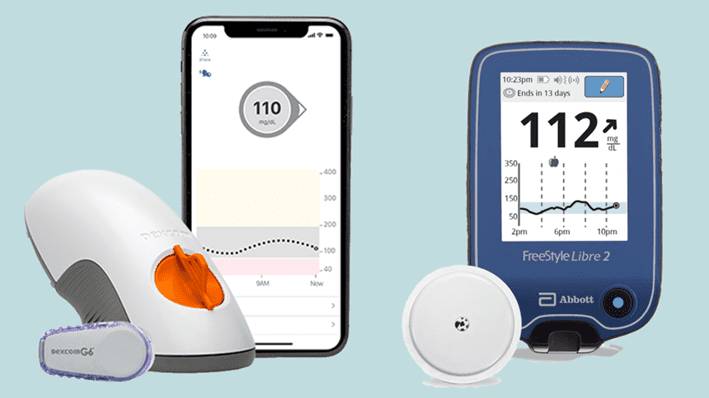
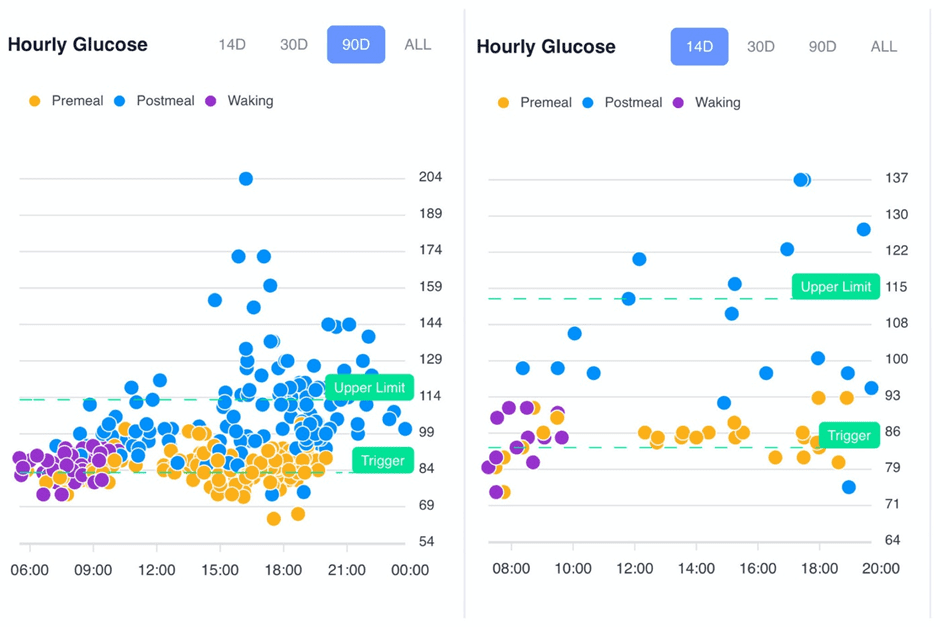
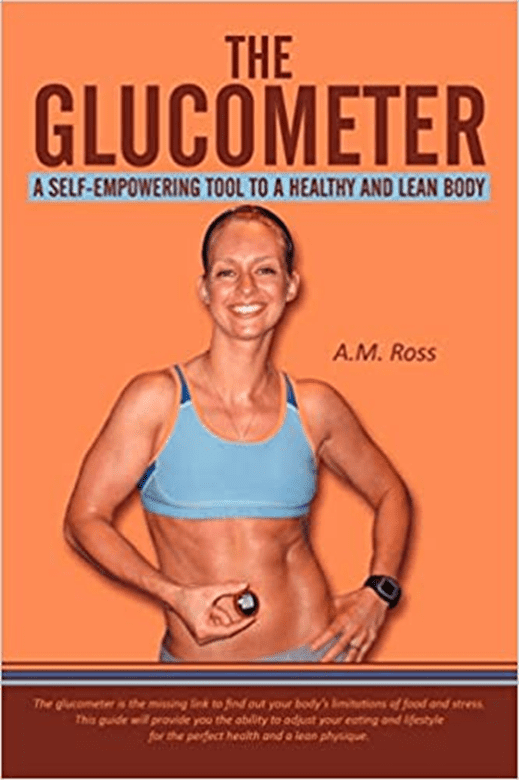

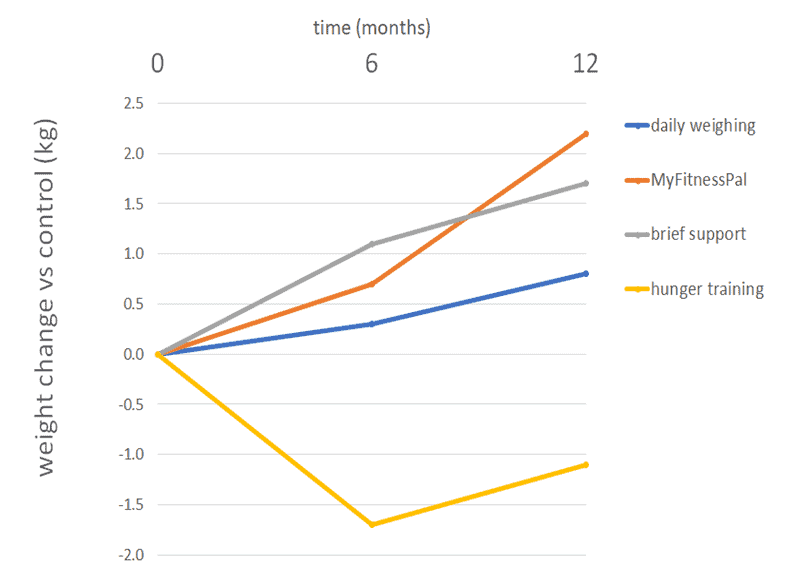


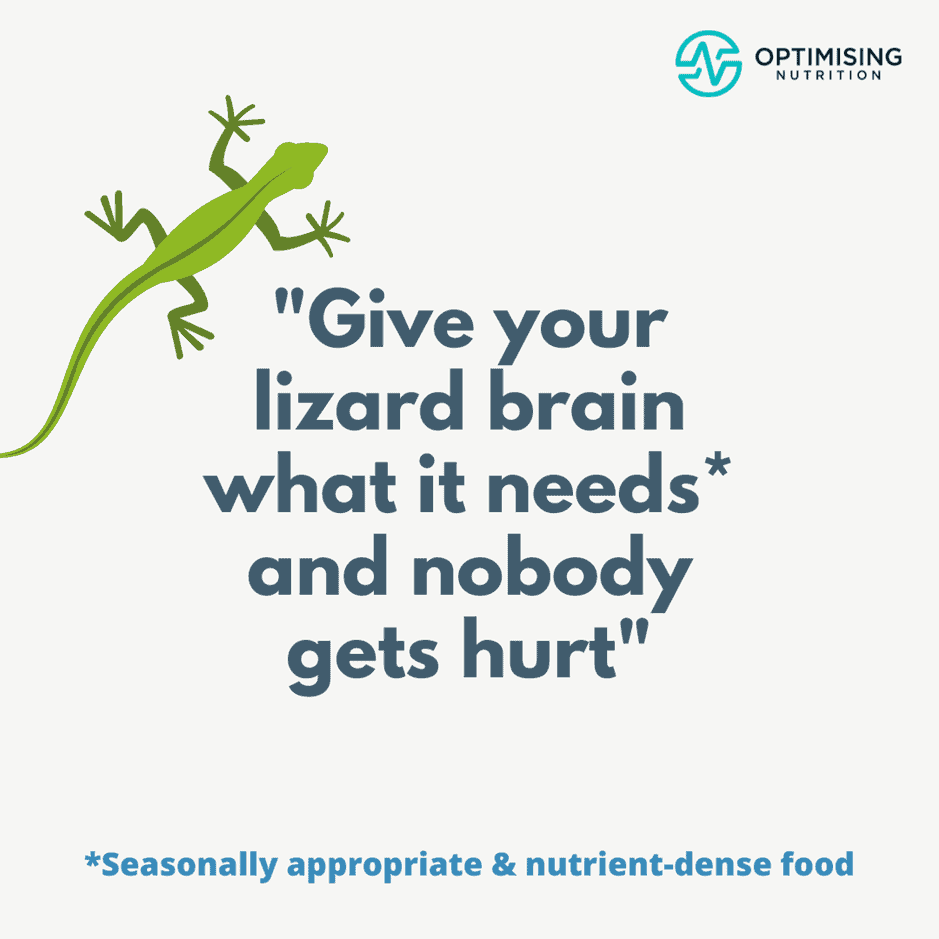
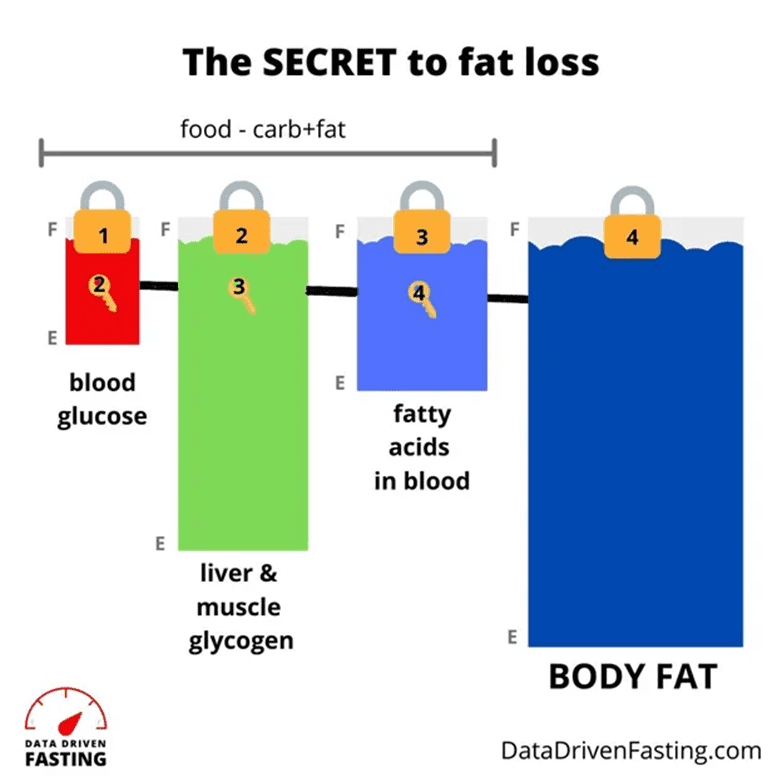


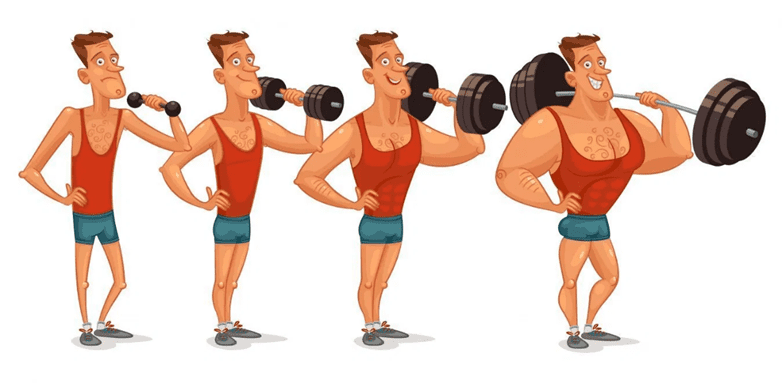










Hi Mart
Interesting, a few thoughts / claims if you please…
a. The transient nature of fat loss. Reminds me of Phinney, who brought up the dynamics of loosing weight; the trick is to access your Calories Inside, which replaces calories In (thru mouth). Once you start loosing weigth and fat storages, you actually need to increase Cal in i.e. eating! Cunterintuitive at first, logical at second! The trick is to access the Calories Inside, which you cleverly do by fasting / measuring.
b. Reminds me of eating carbs vs. fats vs. proteins; only carbs make the blood glucose go below starting point within 3h (the others do not; however, one never eats pure macros as in this trial), which in your world would be tricker to eat. It is also in real world; the nutritionists are correct to recommend 3-4 hour intervals to their carb laden customers… never considering the other alternatives for “hunger education”.
c. The blood fatty acids in you infographics; did you only refer to FFAs, or also to VLDL and LDL, which merely represent the fat back flow to storages? Numerical range for it would be interesting, like 5g of glucose i.e. 20kCal in blood.
JR
a. I am aware of Phinney’s induction, weight loss, premaintenance, maintenance phases. agree that absolute protein is fixed. as you approach maintenance you bring back dietary energy.
b. the timeframe for BGs to return to baseline will depend on what you’re eating. glucose will rise and fall quickly, fat is slower while fat+carb will cause a long and large rise in glucose and insulin.
c. eneryg in fats in the blood is about 150 calories as detailed in this article that went into a lot more depth on the topic. https://optimisingnutrition.com/oxidative-priority-the-secret-to-effective-fat-loss/
Thank you Marty for your comments. Apologies for some misspelled words…
C. Yes, I saw it in your article, forgot though. Presume this is FFA, so VLDL/trigs should optimally approach 100mg/dl i.e. 5g in blood like glucose, caloric value 45 kcal. We would have (main fuels) energy reserves of 20 sugar to 200 fats, kcal in the blood. This I might remember, 1:10…
JR
Hi Marty,
I have downloaded the spreadsheet for step 1, working out my baselines, etc. Thank you for providing that.
There is a column for logging body fat percentage. Do you have a suggested method for this & do you really expect it to change over the baseline week?
most people use daily biometric scales to track progress. the intent is to track your biometrics and get an average over three days so you can monitor your progrss when you move onto Phase 2 – Hunger Training. we have seen some really spectacular in body fat over the 30 days of the challenge. see https://optimisingnutrition.com/how-quickly-can-you-make-progress-with-data-driven-fasting/
Thanks for your reply. I don’t have biometric scales. I was under the impression that they are not very accurate if you’re on a ketogenic diet because of the reduced water retention, but I may be wrong. I will fill out what I can in the spreadsheet anyway.
And now for my second question, I am already fasting from 7:00pm till 11:00am. Can I still do the training while already fasting?
a DEXA scan or an autopsy disection will be more accurate. but we’re not really looking for accuracy, just to track your changes against baseline to make sure you’re not losing excess lean mass over the long term (which is a common problem with long term fasting). water weight drops initially when you drop carbs and glycogen stores fall, then you get into burning the fat on your body. it’s fine if you start out with an 8 hours eating window in baselining, DDF will just help you refine it form there to ensure you keep moving forward.
Can one continue with OMAD with hunger training where you have only one data point?
Or is it better to eat three smaller meals todo hunger training but give up autophagy benefits?
DDF will work with OMAD, but most people find they get great results with two or three meals a day. Most people tend to be able to make better food choices when they’re not as hungry. See https://optimisingnutrition.com/tracking-your-progress-faq-part-3/#htoc-3-19-will-ddf-work-with-omad
The reality is, we don’t know a lot about autophagy in humans. But we do know that achieving a better body composition helps. See https://optimisingnutrition.com/what-makes-ddf-different-faq-part-1-2/#htoc-1-9-will-i-be-getting-enough-autophagy-with-data-driven-fasting